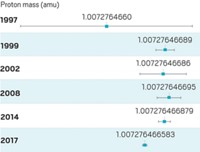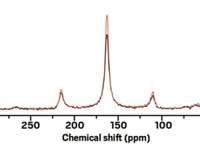Advertisement
Grab your lab coat. Let's get started
Welcome!
Welcome!
Create an account below to get 6 C&EN articles per month, receive newsletters and more - all free.
It seems this is your first time logging in online. Please enter the following information to continue.
As an ACS member you automatically get access to this site. All we need is few more details to create your reading experience.
Not you? Sign in with a different account.
Not you? Sign in with a different account.
ERROR 1
ERROR 1
ERROR 2
ERROR 2
ERROR 2
ERROR 2
ERROR 2
Password and Confirm password must match.
If you have an ACS member number, please enter it here so we can link this account to your membership. (optional)
ERROR 2
ACS values your privacy. By submitting your information, you are gaining access to C&EN and subscribing to our weekly newsletter. We use the information you provide to make your reading experience better, and we will never sell your data to third party members.
Physical Chemistry
Plutonium Analysis Advances
Spectroscopy: Study of nuclear waste, fuels enabled by observation of NMR signal
by Jyllian Kemsley
May 21, 2012
| A version of this story appeared in
Volume 90, Issue 21

Researchers have detected the long-sought nuclear magnetic resonance signal of plutonium-239, one of the common radioactive elements used in nuclear fuel and weapons.
The discovery will allow scientists to use NMR to directly probe plutonium coordination, electronic structure, and nuclear spin relaxation processes in nuclear fuels and waste, as well as in plutonium-containing superconductors, says Melissa A. Denecke. She is the head of actinide speciation at Karlsruhe Institute of Technology’s Institute for Nuclear Waste Disposal, in Germany, and was not involved in the work.
239Pu has been difficult to study directly because of its radioactivity and complex oxidation chemistry. Additionally, its most common oxidation state, Pu(IV), is nonmagnetic, which means that techniques such as magnetic susceptibility or electron spin resonance yield little information. And NMR experiments are challenging because coupling between unpaired electrons and the nuclear spin leads to rapid relaxation and thus loss of signal.
The 239Pu signal was located by a group of researchers from Los Alamos National Laboratory (LANL) and Japan’s Atomic Energy Agency (JAEA). Led by LANL postdoctoral researcher Georgios Koutroulakis and JAEA scientific counselor Hiroshi Yasuoka, the group studied samples of 239PuO2 that were cooled to 4 K to slow spin relaxation. In contrast to standard NMR experiments, in which the magnetic field is held constant while the radiowave frequency is varied, the researchers held the radio frequency constant and swept the magnetic field from 3 to 8 tesla. They found that the gyromagnetic ratio, which predicts where the signal will appear for a particular frequency and magnetic field combination, is 2.856 × 2π MHz/tesla for 239PuO2.
Additional study of a mixed-oxide sample revealed two distinct NMR signals, indicating that 239Pu NMR should be sensitive to different chemical environments around the Pu atom. Koutroulakis notes, however, that fast relaxation times may still be a problem for other Pu complexes, even at 4 K.





Join the conversation
Contact the reporter
Submit a Letter to the Editor for publication
Engage with us on Twitter